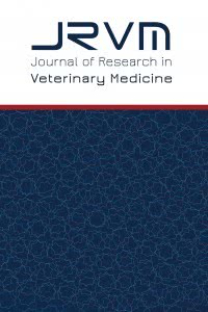CEVAP YÜZEYİ YAKLAŞIMI İLE TAŞIT KOLTUĞU SONLU ELEMAN MODELİNİN GÜNCELLENMESİ
Taşıt koltuğu, Sonlu Eleman, Titreşim, Cevap yüzeyi, Model Güncelleme
Model Updating of a Vehicle Seat Finite Element Model by the Response Surface Method
Vehicle seat, Finite element, Vibration, Response surface, Model updating,
___
- Marwala, T (2010) Finite-Element Model Updating Using Computational Intelligence Techniques: Application to Structural Dynamics, Springer-Verlag, London. doi: 10.1007/978-1-84996-323-7.
- Wang, Q. ve Deng, X. (1999). Damage detection with spatial wavelets. International Journal of Solids and Structures, 36, 3443-3468. doi: 10.1016/S0020-7683(98)00152-8.
- Sehgal, S. ve Kumar, H. (2014) Structural dynamic finite element model updating using Derringers Function: A Novel Technique. Wseas Transactions On Applied And Theoretical Mechanics, 9, 11-26. (http://www.wseas.org/multimedia/journals/mechanics/2014/a045711-133.pdf).
- Ren, W.X. ve Chen, H.B. (2010). Finite element model updating in structural dynamics by using the response surface method. Engineering Structures, 32, 2455-2465. doi: 10.1016/j.engstruct.2010.04.019
- Shan, D, Li, Q., Khan, I. ve Zhou, X. (2015) A novel finite element model updating method based on substructure and response surface model. Engineering Structures, 103, 147 doi: 10.1016/j.engstruct.2015.09.006
- Jninkwan, A, ve Singh, J. (2014). Simulation of moment deflection test on driver seat of car using finite element analysis. International Journal of Science and Research, 3(7), 299-303. https://www.ijsr.net/archive/v3i7/MDIwMTQ5OTI=.pdf
- Grujicic, M, Pandurangan, B., Arakere, G. Bell, W.C., He, T. ve Xie, X. (2009). Seat-cushion and soft-tissue material modeling and a finite element investigation of the seating comfort passenger-vehicle occupants. Materials Design, 30, 4273-4285. https://doi.org/10.1016/j.matdes.2009.04.028.
- Liu, C., Qiu, Y., Griffin, M.J. (2013). Finite element modelling of human-seat interactions: vertical in-line and fore-and-aft cross-axis apparent mass when sitting on a rigid seat without brackets and exposed to vertical vibration. Ergonomics, 58(7), 1207-1219. doi: 10.1080/00140139.2015.1005164
- Zhang, X., Qiu, Y., Griffin, M. (2014). Developing a simplified finite element model of a car seat with occupant for predicting vibration transmissibility in the vertical direction. Ergonomics, 58(7), 1220-1231. doi: 10.1080/00140139.2015.1005165
- Myers, R.H., Montgomery, D.C. ve Andersen-Cook, C.M. (2009). Response Surface Methodology: Process and Product Optimization Using Designed Experiments, John Wiley & Sons, New Jersey.
- Fang, S-E. ve Perera, R. (2011). Damage identification by response surface based model updating using D-optimal design. Mechanical Systems and Signal Processing, 25, 717-733. doi:10.1016/j.ymssp.2010.07.007.
- Mukhopadhyay, T., Dey, T.K., Chowdhury, R.. ve Chakrabarti, A. (2015). Structural damage identification using response surface-based multi-objective optimization: A comparative study, Arab J Sci Eng, 40,1027-1044. doi: 10.1007/s13369-015-1591-3.
- Banerjee, A., Panigrahi, B. ve Pohit, G. .(2015). Crack modelling and detection in Timoshenko FGM beam under transverse vibration using frequency contour and response surface model with GA, Nondestructive Testing and Evaluation, doi: 10.1080/10589759.2015.1071812.
- He, J. ve Fu, Z. (2001). Modal Analysis, Woburn, MA: Butterworth-Heinemann.
- Efe, H ve Çağatay, K. (2011). Çeşitli masif ağaç malzemelerin bazı fiziksel ve mekanik özelliklerinin belirlenmesi, Politeknik Dergisi, 14, 55-61. doi: 10.2339/2007.10.3.303-311.
- http://kisi.deu.edu.tr/burak.felekoglu/17.ahsap.pdf, Erişim Tarihi: 23.10.2018, Konu: Ahşap malzemelerin teknik özellikleri
- Parsopoulos, K. E. ve Vrahatis, M. N. (2010). Particle Swarm Optimization and Intelligence: Advances and Applications, IGI Global, Hershey, PA, USA.
- ISSN: 2148-4147
- Yayın Aralığı: 3
- Başlangıç: 2002
- Yayıncı: BURSA ULUDAĞ ÜNİVERSİTESİ > MÜHENDİSLİK FAKÜLTESİ
ASENKRON MOTOR EKSENEL KAÇIKLIK ARIZALARININ SHANNON ENTROPİSİ İLE ANALİZİ
Abdurrahman ÜNSAL, Selahattin GÜÇLÜ
Rukiye ERTAN, Abdil KUŞ, İsmail DURGUN
Ceyhun AKSOYLU, Musa Hakan ARSLAN
Mojibullah NOORİ, Nurten TOPALOĞLU, Mustafa TEMŞİ, Hakan TÜRKER
BULANIK ABC-VED ANALİZİ İLE METAL SEKTÖRÜNDE STOK SINIFLANDIRMASI
Nano Boyutlu Vücut Merkezli Kablosuz Ağların Alveolar Alanları ve İnsan Dokuları İçin Numerik Analiz
Elif Nur KALEMCİ, Sabriye Banu İKİZLER, Tayfun DEDE, Zekai ANGIN
